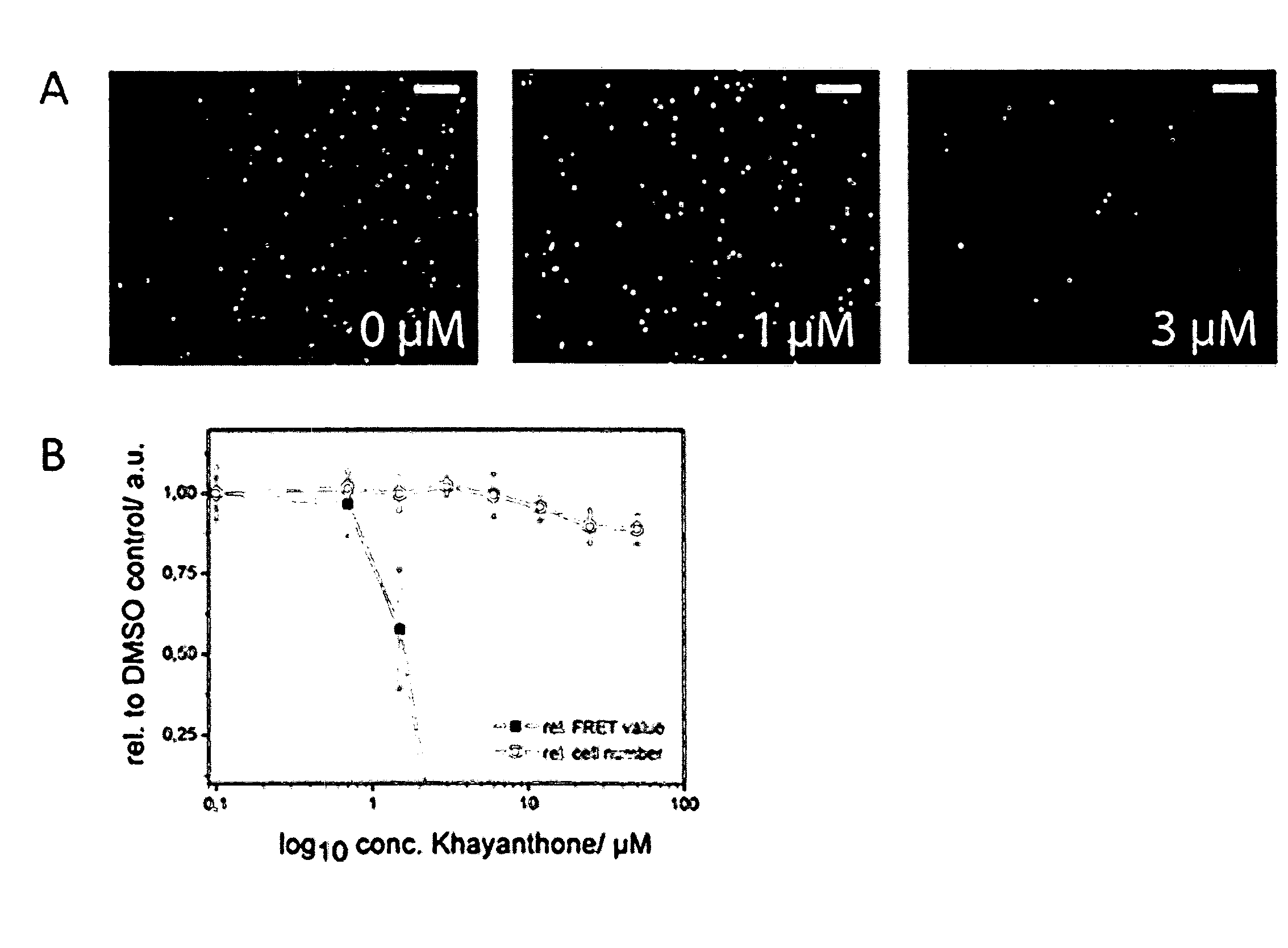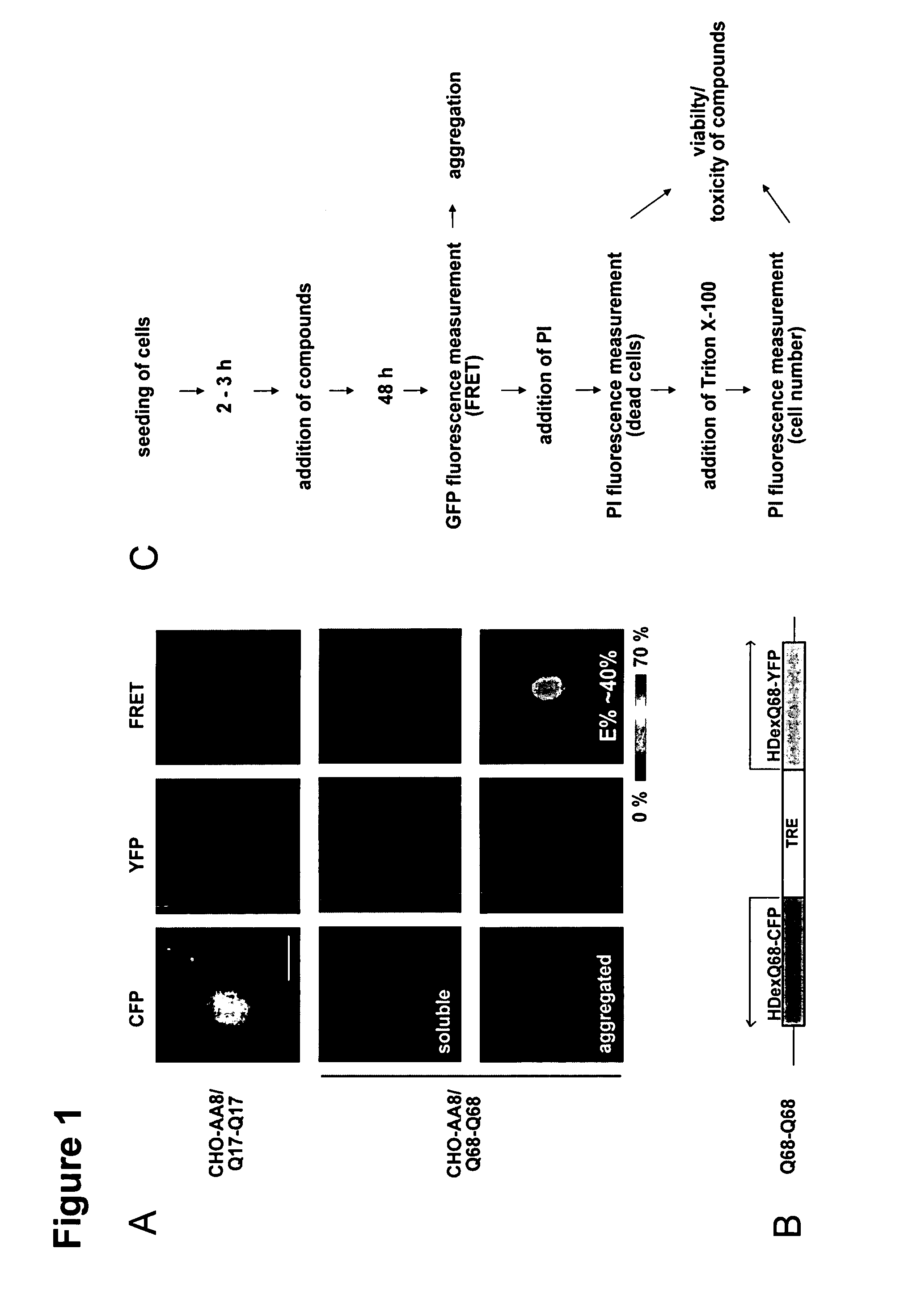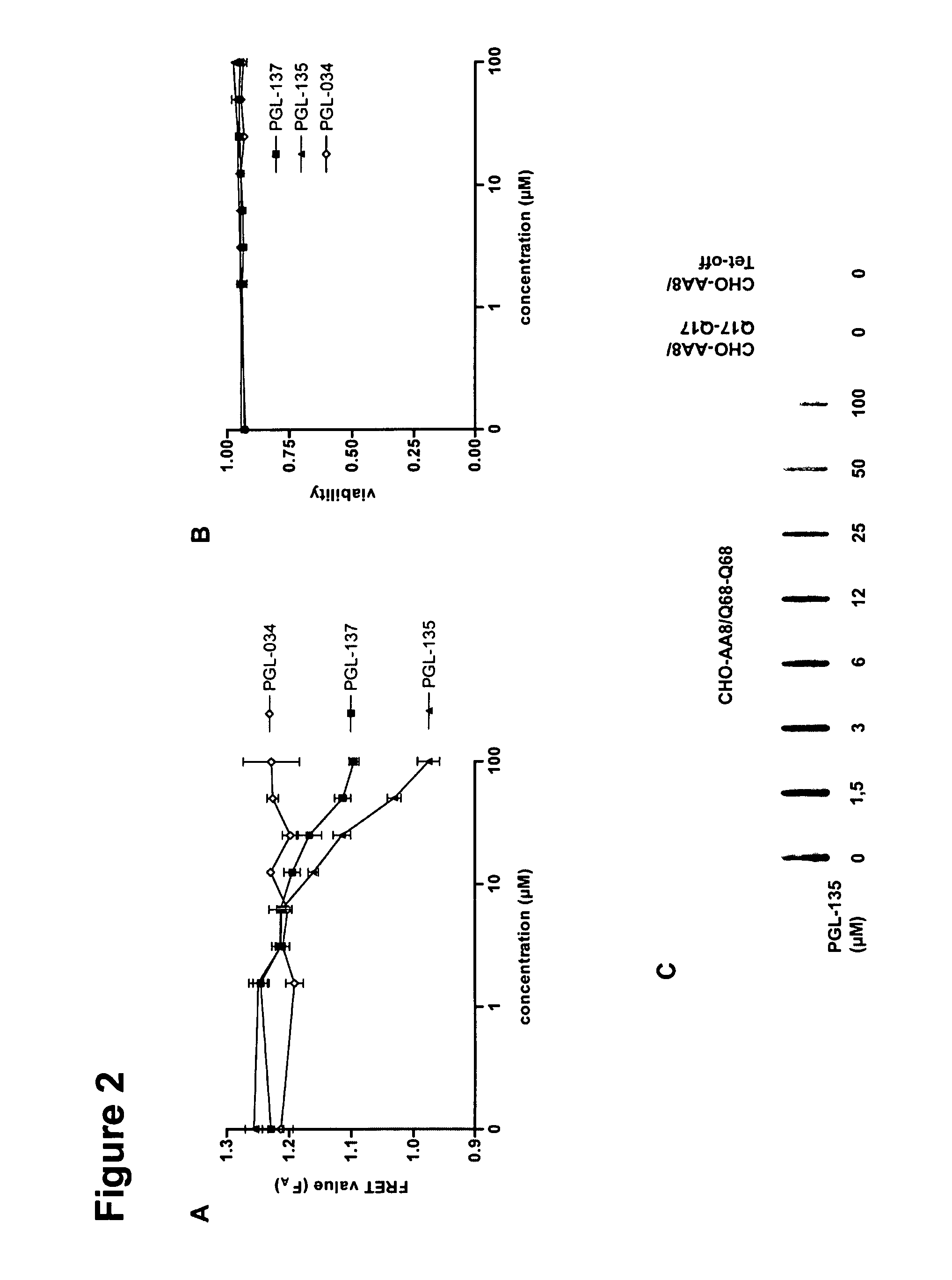Compounds for the Modulation of Huntingtin Aggregation, Methods and Means for Identifying Such Compounds
a technology applied in the field of compound and aggregation modulation of huntingtin, methods and means for identifying such compounds, can solve problems such as causative treatmen
- Summary
- Abstract
- Description
- Claims
- Application Information
AI Technical Summary
Benefits of technology
Problems solved by technology
Method used
Image
Examples
examples
[0240]Methods
[0241]Compounds
[0242]Compounds tested were solved in DMSO as 100 mM (Indomethacin, Coenzyme Q10), 50 mM (Congo red), 25 mM (NDGA), 10 mM (Scriptaid, PGL-135, Riluzole), 1 mM (Chrysamin G, Half Chrysamin G, Creatine, z-VAD-FMK, Mithramycin, Diclofenac sodium), 0.05 mM (Geldanamycin) solution or in water as 4000 mM (Sodium salicylate), 100 mM (Threhalose, Creatine), 10 mM (Cystamine Dihydrochloride, Y-27635). All substances except Coenzyme Q10 and Creatine (Sigma Aldrich) were purchased from Calbiochem.
[0243]Plasmid Constructs
[0244]Huntingtin fusion proteins (Q17-YFP, Q68-YFP, Q17-CFP, Q68-CFP) coding for sequences of N-terminal huntingtin (aa1-90) with 17 and 68 polyglutamines, respectively, were PCR amplified using HD514Q17 and HD514Q68 constructs (Sigler et al., 2003) and cloned into the pBI cloning system (Clontech) including a bidirectional tet-responsive promoter.
[0245]SEQ ID NO. 1 shows the complete protein sequence of huntingtin, referring to Accession No. P42858 ...
PUM
| Property | Measurement | Unit |
|---|---|---|
| pH | aaaaa | aaaaa |
| concentration | aaaaa | aaaaa |
| distance | aaaaa | aaaaa |
Abstract
Description
Claims
Application Information
 Login to View More
Login to View More - R&D
- Intellectual Property
- Life Sciences
- Materials
- Tech Scout
- Unparalleled Data Quality
- Higher Quality Content
- 60% Fewer Hallucinations
Browse by: Latest US Patents, China's latest patents, Technical Efficacy Thesaurus, Application Domain, Technology Topic, Popular Technical Reports.
© 2025 PatSnap. All rights reserved.Legal|Privacy policy|Modern Slavery Act Transparency Statement|Sitemap|About US| Contact US: help@patsnap.com



